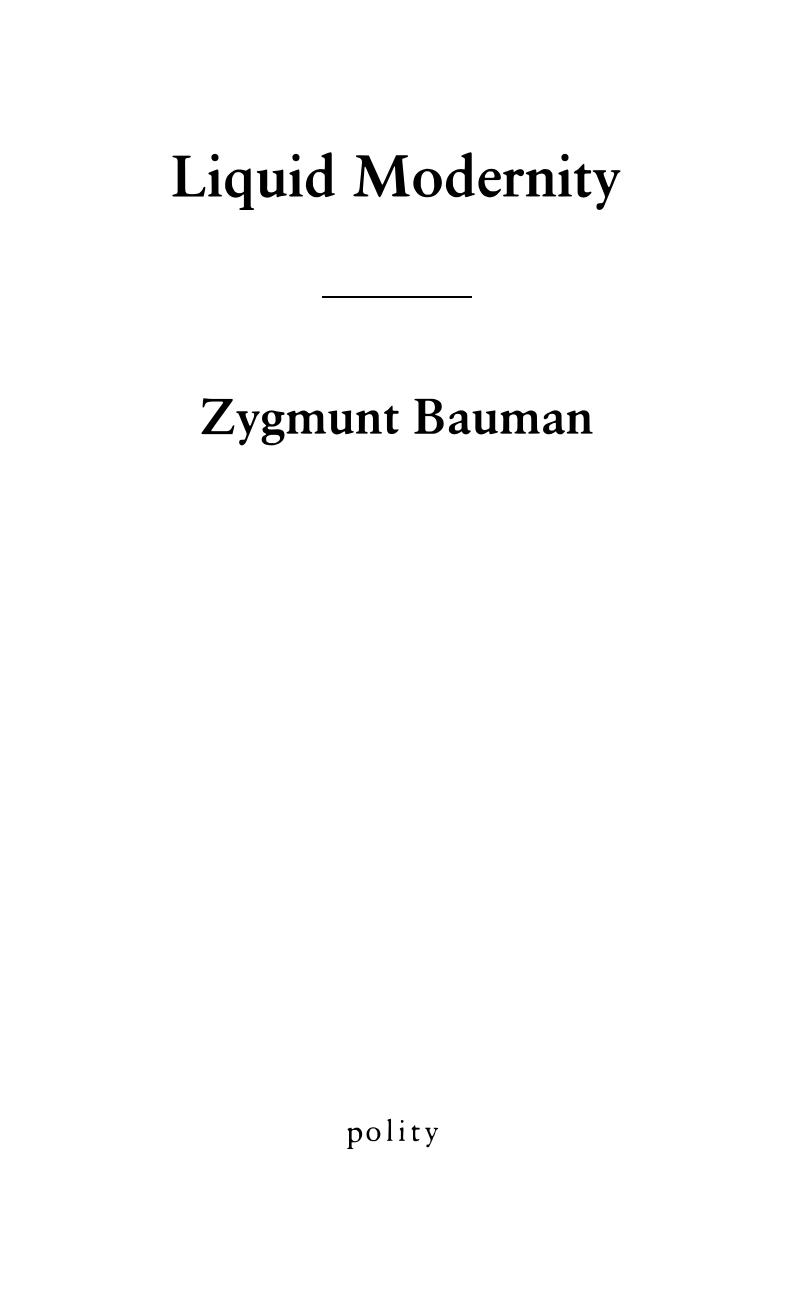Liquid Modernity by Zygmunt Bauman

Author:Zygmunt Bauman [Bauman, Zygmunt]
Language: eng
Format: epub, pdf
Publisher: Wiley
Published: 2013-07-24T00:00:00+00:00
Modernity as history of time
When I was a child (and that happened in another time and another space) it was not uncommon to hear the question ‘How far is it from here to there?’ answered by ‘About an hour, or a bit less, if you walk briskly.’ In a time more ancient yet than my childhood years the more usual answer, I suppose, would have been ‘If you start now, you will be there around noon’ or ‘Better start now, if you want to be there before dusk.’ Nowadays, you may hear on occasion similar answers. But it will normally be preceded by a request to be more specific: ‘Do you have a car? Or do you mean on foot?’
‘Far’ and ‘long’, just like ‘near’ and ‘soon’, used to mean nearly the same: just how much or how little effort it would take for a human being to span a certain distance – be it by walking, by ploughing, or harvesting. If people were pressed hard to explain what they meant by ‘space’ and ‘time’, they could have said that ‘space’ is what you can pass in a given time, while ‘time’ is what you need to pass it. Unless pressed hard, though, they would not play the game of definition at all. And why should they? Most things immersed in daily life one understands fairly enough until asked to define them; and unless asked, one would hardly need to define them in the first place. The way one understood those things which we tend now to call ‘space’ and ‘time’ was not just satisfactory, but as precise as needed, as long as it was but the ‘wetware’ – the humans, the oxen or the horses – who made the effort and set its limits. One pair of human legs may be different from another, but the replacement of one pair with another would not make a large enough difference to call for measures other than the capacity of human muscles.
In the times of the Greek Olympics no one thought of track or Olympic records, let alone of breaking them. The invention and deployment of something other than the power of human or animal muscles was needed for such ideas and for the decision to assign importance to the differences between the capacities of human individuals to move, to be conceived and to stimulate practice – and so for the prehistory of time, that long era of wetware-bound practice, to end, and the history of time to start. The history of time began with modernity. Indeed, modernity is, apart from anything else, perhaps even more than anything else, the history of time: modernity is the time when time has a history.
If one searches history books for the reason why space and time, once blended in human life-labours, have fallen apart and drifted away from each other in human thought and practice, one will often find uplifting stories of discoveries made by the valiant knights of reason – intrepid philosophers and courageous scientists.
Download
This site does not store any files on its server. We only index and link to content provided by other sites. Please contact the content providers to delete copyright contents if any and email us, we'll remove relevant links or contents immediately.
Nudge - Improving Decisions about Health, Wealth, and Happiness by Thaler Sunstein(7238)
iGen by Jean M. Twenge(5158)
The Fire Next Time by James Baldwin(5015)
Adulting by Kelly Williams Brown(4231)
The Hacking of the American Mind by Robert H. Lustig(4081)
The Sports Rules Book by Human Kinetics(4072)
The Ethical Slut by Janet W. Hardy(4036)
Captivate by Vanessa Van Edwards(3722)
Mummy Knew by Lisa James(3519)
In a Sunburned Country by Bill Bryson(3363)
The Worm at the Core by Sheldon Solomon(3325)
Ants Among Elephants by Sujatha Gidla(3278)
Suicide: A Study in Sociology by Emile Durkheim(2902)
The Slow Fix: Solve Problems, Work Smarter, and Live Better In a World Addicted to Speed by Carl Honore(2837)
The 48 laws of power by Robert Greene & Joost Elffers(2801)
Humans of New York by Brandon Stanton(2683)
Handbook of Forensic Sociology and Psychology by Stephen J. Morewitz & Mark L. Goldstein(2603)
The Happy Hooker by Xaviera Hollander(2582)
The Tipping Point by Malcolm Gladwell(2554)
